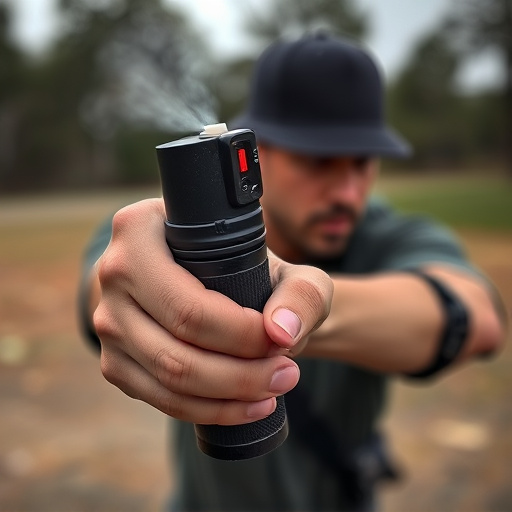"When to Use Pepper Spray Safely" emphasizes the tactical deployment of pepper spray as a non-lethal self-defense tool for law enforcement and military. This effective close-quarters combat mechanism causes temporary blindness and respiratory irritation through capsaicin from chili peppers. Safe use requires proper training, protective gear, adherence to safety protocols, specific targeting of facial areas, and following manufacturer instructions on technique and distance. Proper ventilation is crucial, especially outdoors, while regular training minimizes risks associated with mishandling or accidental deployment, making it a valuable tool in crowd control, self-defense, high-risk security areas, police operations, and personal safety.
“Tactical inflammatory spray, also known as pepper spray, is a powerful personal defense tool. This article delves into the basics of this potent self-defense mechanism, exploring its safe use guidelines for maximum effectiveness with minimal risks. We’ll uncover the optimal scenarios for deployment, providing insights on when and how to use pepper spray safely. By understanding these key aspects, you’ll be empowered to make informed decisions in potentially dangerous situations.”
- Understanding Tactical Inflammatory Spray: Unveiling the Basics
- Safe Use Guidelines: Ensuring Effectiveness and Minimizing Risks
- When to Deploy: Scenarios for Strategic Pepper Spray Defense
Understanding Tactical Inflammatory Spray: Unveiling the Basics
Tactical inflammatory spray, commonly known as pepper spray, is a powerful non-lethal self-defense tool designed for law enforcement and military personnel. It works by causing irritation and temporary blindness in the eyes and respiratory system of the target, allowing the user to escape or control a situation safely. The active ingredient, capsaicin, is derived from chili peppers, making it an effective yet relatively safe option for tactical operations.
When to Use Pepper Spray Safely involves understanding its limitations and potential risks. It’s crucial to receive proper training before deploying such a system as incorrect use can lead to unintended harm. Situations where pepper spray might be appropriate include close-quarters encounters with aggressive individuals, crowd control during riots or protests, and as a last resort when facing armed threats that require immediate disarming or distraction. Always follow safety protocols, wear protective gear if available, and ensure the target is within effective range to minimize risk of exposure for both the user and bystanders.
Safe Use Guidelines: Ensuring Effectiveness and Minimizing Risks
When to Use Pepper Spray Safely: Safe Use Guidelines for Optimal Effectiveness and Risk Mitigation
The tactical inflammatory spray, commonly known as pepper spray, is a powerful tool when used appropriately in self-defense scenarios. Safe use guidelines are paramount to ensure its effectiveness against potential attackers while minimizing risks to users and bystanders. It should only be deployed when facing an imminent threat of physical harm, such as during unprovoked assaults or when trying to subdue an aggressive individual who poses a danger to oneself or others.
To maximize its impact, pepper spray should be aimed at the face, eyes, nose, and mouth of the target. Users must follow manufacturer instructions regarding spray technique and distance, typically aiming from 2-3 feet away. Proper ventilation is crucial in outdoor settings; users should consider wind direction to prevent spraying towards innocent individuals or areas with limited air circulation to avoid excessive inhalation risks. Regular training and practice are essential to ensure users are familiar with the device’s operation, deactivation, and proper disposal, thereby minimizing mishandling and potential accidents.
When to Deploy: Scenarios for Strategic Pepper Spray Defense
When deciding on deploying a tactical inflammatory spray defense system, understanding the appropriate scenarios is crucial for safe and effective use. The most common situations include crowd control during protests or civil unrest, where pepper spray can help maintain order and deter aggressive behavior. It’s also valuable in self-defense scenarios, providing individuals with a non-lethal means to protect themselves against potential threats, especially in close quarters.
Strategically, consider environments like high-risk security areas, police operations, or even personal safety at home or during outdoor activities. However, it’s essential to remember that pepper spray should only be used when necessary and as a last resort. Improper or excessive use can lead to serious health complications, so training and understanding the legal implications are vital for safe deployment.
Tactical inflammatory spray, or pepper spray, is a powerful tool when used strategically and safely. By understanding its basic mechanisms, adhering to safe use guidelines, and recognizing optimal deployment scenarios, individuals can effectively protect themselves in various situations. When to use pepper spray safely is a critical consideration, as it can be a game-changer in personal defense while minimizing risks.
